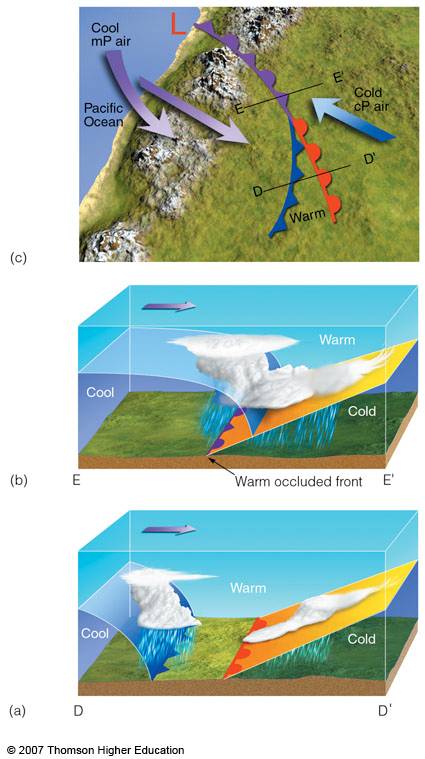Warm Occlusion
cold air behind cold front is not dense enough to lift cold air ahead of warm front
cold front rides up and over the warm front
upper-level cold front reached station before surface warm occlusion
QUESTIONS FOR THOUGHT:
- Explain why freezing rain more commonly occurs with warm fronts than with cold fronts.
- Sketch the relative positions of a low and its attendant cold and warm fronts that would be observed in the southern hemisphere. How would the winds shift during the passage of the cold front?
- Why does the same cold front produce more rain over Kentucky than over western Kansas?
- Sketch representative soundings (temperature and winds) ahead and behind a cold front
- Sketch representative soundings (temperature and winds) ahead and behind a warm front
- You are in Ithaca, NY and observe the wind shifting from East to South accompanied by a sudden rise in both the air temperature and dew point temperature. What type of front passed?
- If Lake Erie froze over in January, is it still possible to lave lake-effect snows off Lake Erie in February? Why or why not?
- In winter, cold frontal weather is typically more violent than warm-front weather. Why? Explain why this is not necessarily true in summer.
- Thunderstorms have formed along a cold front producing rain showers on the cold-air side of the front. Assuming that the air on the cold-air side of the front is initially sub saturated, will the rain showers increase the temperature difference across the front (frontogenesis) or decrease the temperature difference across the front (frontolysis)? Explain your answer.
